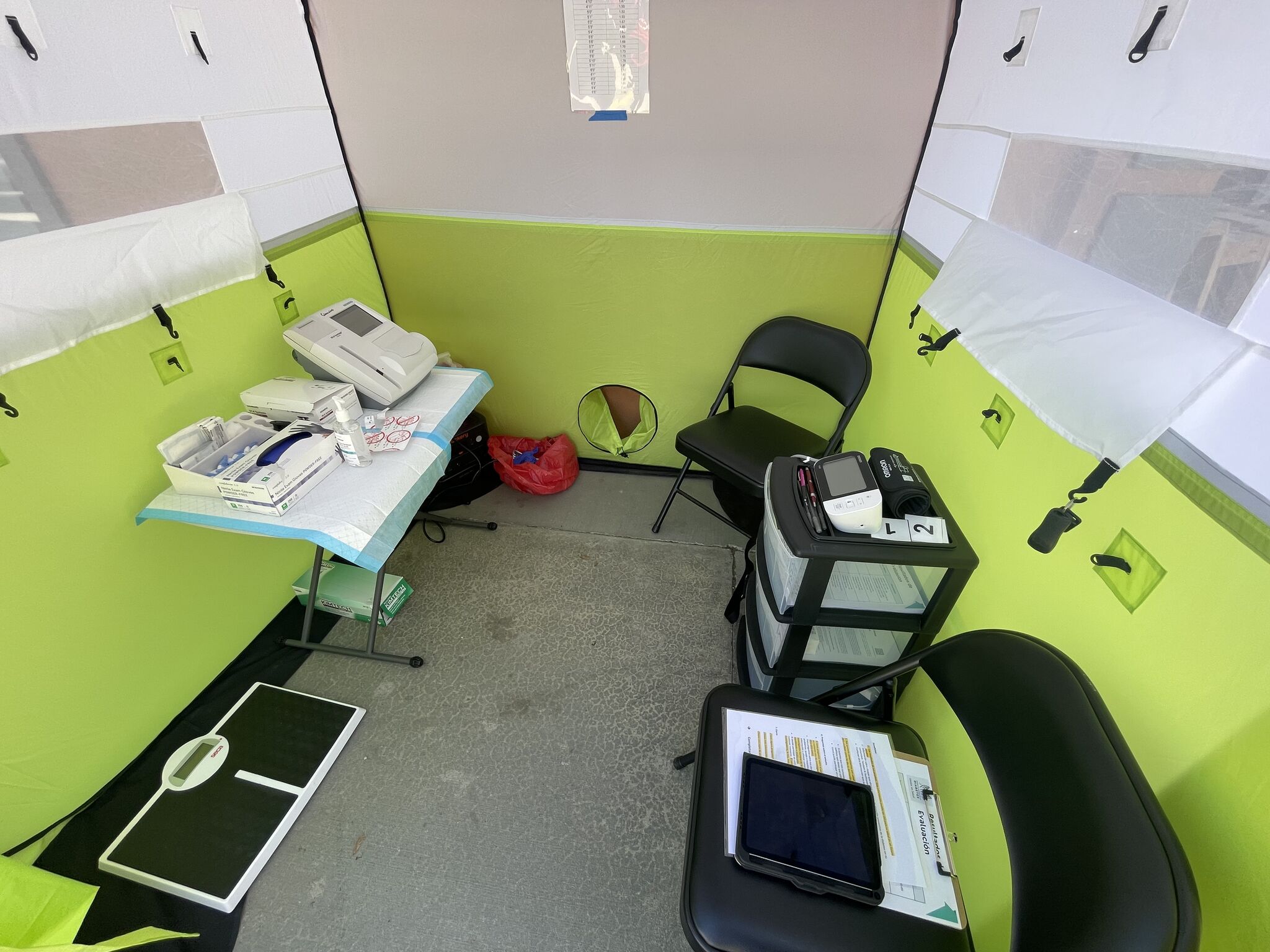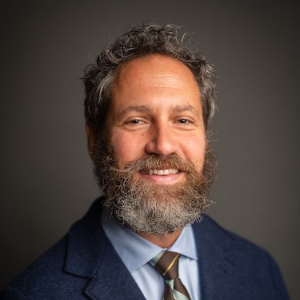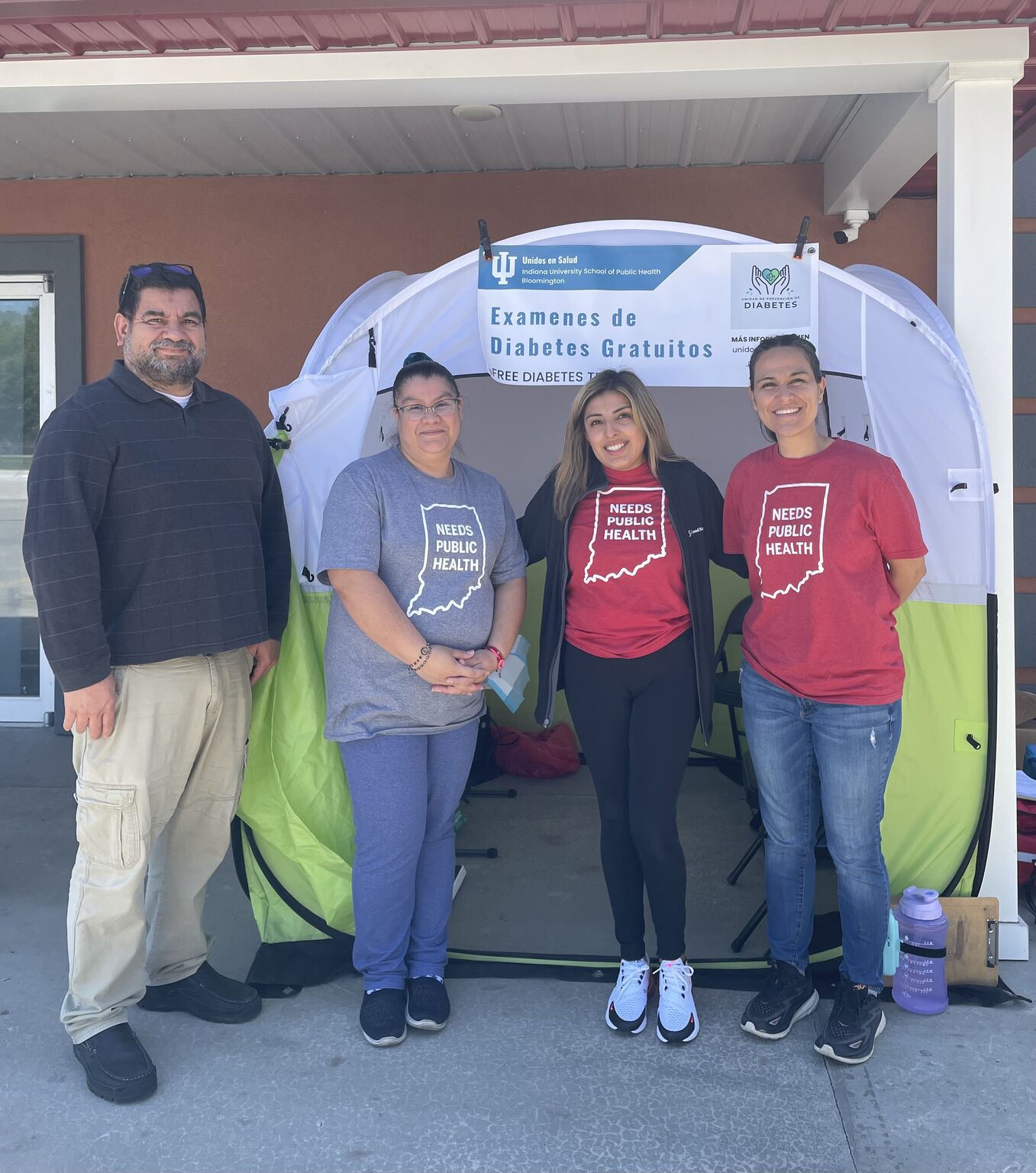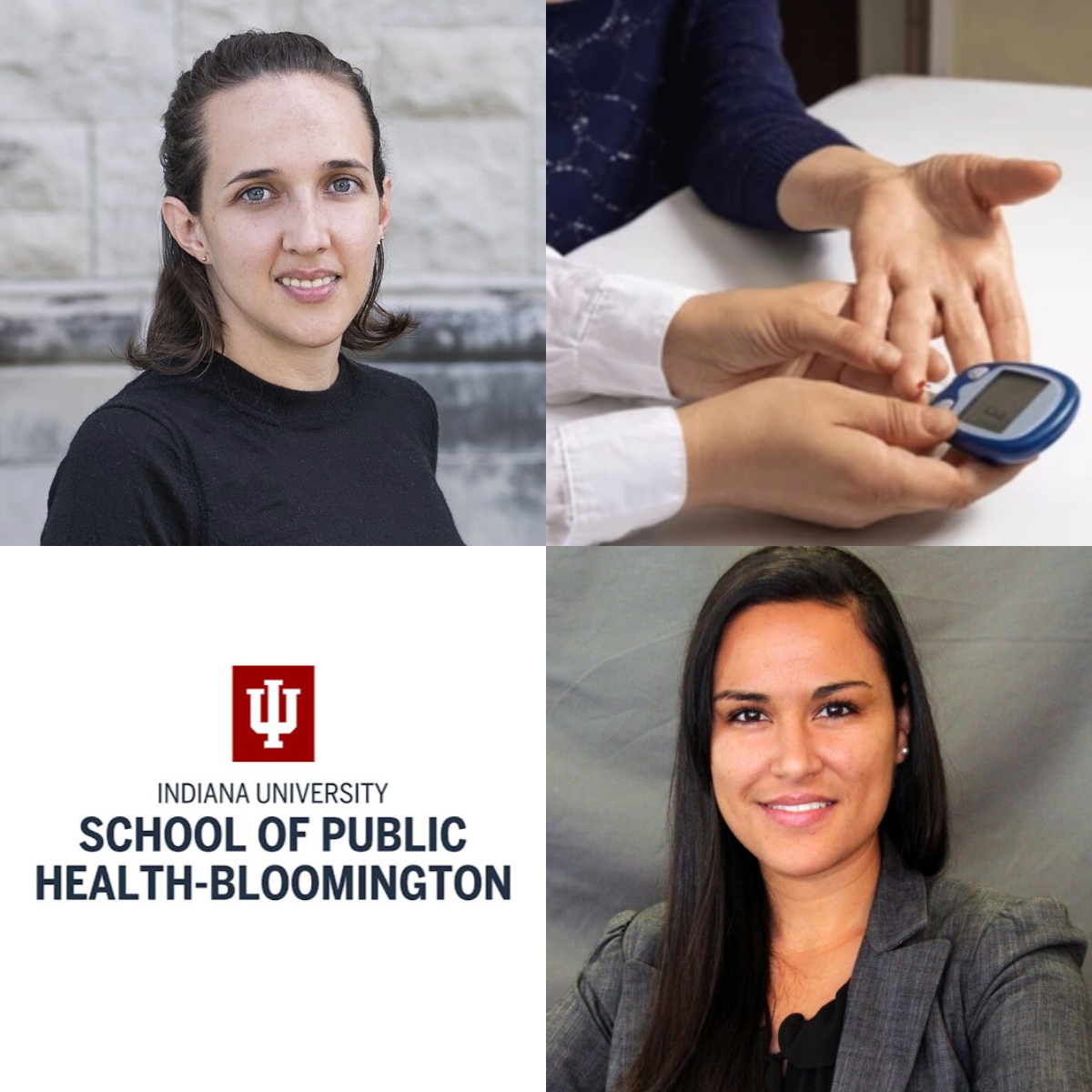SPH-B faculty members Ines Gonzalez-Casanova, Ph.D. and Karla Galaviz, Ph.D. were more than a year into designing a crucial intervention for diabetes detection to help close the health equity gap in rural Hoosier Hispanic populations when—shortly before launch—the project grant funding was terminated.
But with the support of SPH-B leadership, Indiana University Bloomington, and several community partners, Galaviz and Gonzalez-Casanova persevered: In May, they launched the first mobile diabetes screening units in Daviess and Dubois Counties.
This is phase 2 of a research project funded last spring by the National Institutes of Health (NIH) in the amount of $594,375.

"We heard from our program officer the last week of April that our grant was going to be terminated the following week," says Gonzalez-Casanova. "It was a terrible moment to interrupt the process when we had just co-designed these mobile units with the communities and trained staff members on how to use the equipment."
Thankfully, SPH-B leadership were quick to respond to this turn of events. With the support of Department Chair Eric Walsh-Buhi, Executive Associate Dean NiCole Keith, and Associate Dean for Research Kelli Ryckman and the SPH-B grants team, Gonzalez-Casanova and Galaviz were encouraged to apply for the campus’s pilot payback program where up to $25,000 can be requested to get pilot data for a larger proposal.
"We were approved an hour after we applied," says Gonzalez-Casanova. "That was a huge relief…everyone stepped up for us and supported us through the appeal process."
Walsh-Buhi says the support for this project was unquestionable given its powerful alignment with the goals of IUB 2030, which include advancing the university’s commitment to the health and wellbeing improvement in communities across the state.

"A panel of expert peer reviewers recognized the exceptional merit of the proposal, giving it among the highest of scores, and an NIH advisory council strongly endorsed its funding,” adds Walsh-Buhi. "This is truly outstanding and impactful research."
Currently the units website is live, with an aim to provide timely updates as to when and where the diabetes units will appear. As of this writing, Galaviz says that of the 74 people screened so far, 49 had elevated results indicating pre-diabetes or diabetes—illustrating the crucial need for these health services.
"That is about 66 percent, which is extremely high," says Galaviz. “The national prevalence of pre-diabetes is 38 percent; and while this is not a representative example, it is striking that over half the people who have screened with us had elevated blood glucose."
Gonzalez-Casanova shares that the partnerships with Asociación Latinoamericana del Sur de Indiana (ALASI) based in Dubois County, Daviess Health Department, and Purdue Extension have been crucial to the success of the launch of these facilities. Gonzalez-Casanova adds that "rockstar" community members ALASI Executive Director Rossina Sandoval and Cynthia Sandoval from the Daviess Health Department have worked tirelessly with the dynamic duo. Rossina Sandoval was selected for the Community Partner Award at the IU Center for Rural Engagement’s conference held in May this year.

"Having these strong community partnerships helped us in this moment of crisis because they designed the diabetes unit and own it,” says Galaviz. "This is very good for sustainability purposes because when we have to take our hands off this project, we want these mobile units to continue running on their own—having ALASI and the Daviess Health Department involved ensures this will keep going."
Community partners helped design the mobile pop-up units throughout the course of four workshops last fall, the last one held in November 2024. Each workshop had a goal, from defining the needs and barriers for those in rural Hispanic populations seeking diabetes preventive services, ideas for addressing the barriers, and turning those ideas into actionable solutions.
"Barriers identified included transportation, as many clinics are far away; language barriers, as many patients do not speak English, fear; and cost of diagnosis," says Galaviz. "We had this idea it could be a tent that pops up whenever people need it, and that’s essentially what the community designed."
Galaviz says it is important to note that this research project does not just act as a screening tool—it is also a gateway for participants to get care that might not even know they need.
"You cannot take someone’s blood, give them their numbers and leave it at that," says Galaviz. "What is most important is that this diabetes unit links people to care…this is what we were trying to figure out with community partners—where do they go if they don’t have insurance, if they don’t speak English, if they need transportation? This unit helps with the first parts of the cascade of care—identification and linkage to care."
For even more compelling stories about the SPH-B community changing the face of public health, visit go.iu.edu/48bx.


